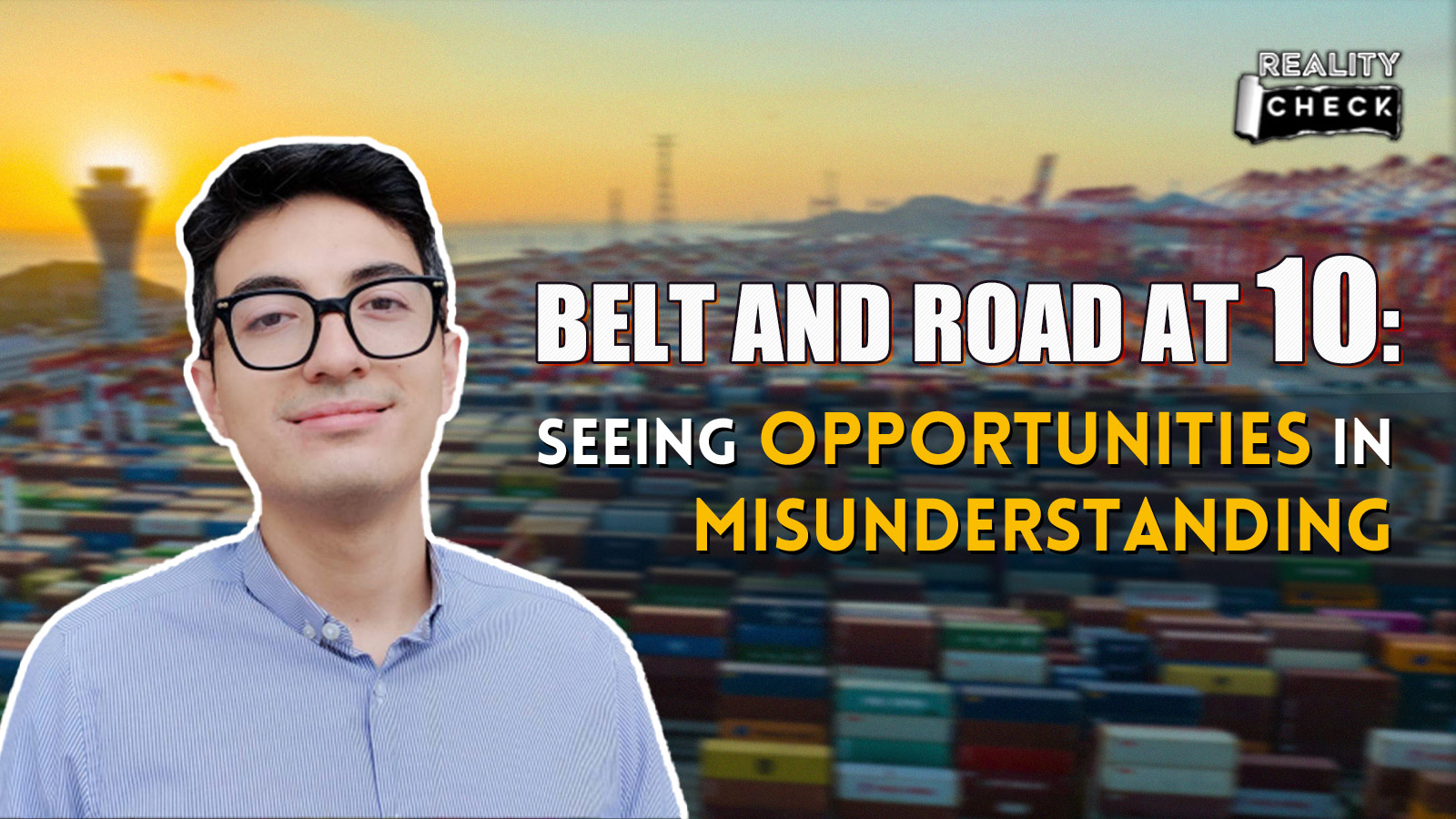04:33

Editor's note: This year marks the 10th anniversary of the Belt and Road Initiative (BRI). What benefits has the initiative brought to partner countries? What is the logic behind the smear campaign by some American and European media? In this episode of Reality Check, CGTN Special Commentator Danny Haiphong, shared his thoughts on the opportunities and risks of the BRI. Danny Haiphong is an independent journalist in the U.S. and founding member of the No Cold War international campaign.
The Belt and Road Initiative or BRI for short, turns 10 this month. The BRI has fast become the most important global development project in the world today. Over 150 countries and 30 international organizations have joined the BRI since its founding.
The Belt and Road Initiative has received intensely biased coverage in the Western mainstream media and establishment sources, the bigger it has got in. A simple search in the West's most popular engine, Google, finds that more than 90 percent of the reports describe the BRI as a resounding failure and a "debt trap" for partner countries. But are any of the claims true?
The simple answer is, no. In fact, Western mainstream media and its establishment have contradicted themselves on numerous occasions. A report in Chatham House, a UK-based think tank funded in part by the U.S. and UK governments, stated that "Developing-country governments are not hapless victims of a predatory Beijing; they – and their associated political and economic interests – determine the nature of BRI projects on their territory. Far from unfolding according to a Chinese strategic blueprint, the BRI is actually being built piecemeal, through diverse bilateral interactions."
A 2021 article in the Atlantic added, "Chinese banks are willing to restructure the terms of existing loans and have never actually seized an asset from any country." This is no less true for Belt and Road Initiative projects.

A general view of the main entrance of Entebbe International Airport, bulit under the Belt and Road Initiative, in Entebbe, Uganda, December 1, 2021. /CFP
A general view of the main entrance of Entebbe International Airport, bulit under the Belt and Road Initiative, in Entebbe, Uganda, December 1, 2021. /CFP
That year, Western media reported that China had forcibly seized the Entebbe International Airport from Uganda for failure to pay its loans. Not only did this not happen, but Western media outlets also conveniently left out that there was a seven-year grace period for the 20-year loan established in 2015, meaning that Uganda was not yet responsible for a single payment at the time of the report.
The truth about the Belt and Road Initiative is thus far different from the sensational and fact-free accounts in the Western mainstream media. BRI projects have brought enormous gains to both China and partner countries alike. The key to the BRI is win-win cooperation and connectivity. Trade between China and BRI partner countries has more than doubled since its founding, with an average annual growth rate of 8 percent, thanks to the BRI's rapid development of key infrastructure needed for economic growth.
In Indonesia, for example, the Jakarta-Bandung high-speed rail has become fully operational this October and has cut the travel time between the two cities from three hours to just 40 minutes, thereby enhancing the livelihoods of the people and increasing people-to-people exchange opportunities. In Laos, the Sino-Laos railway has launched in 2021, connecting the landlocked country with 10 of its neighbors and leading to a reduction in costs of key commodities such as rubber. Tourism is now booming and local people have been able to raise their standard of living.

Indonesian President Joko Widodo reacts when the screen shows a speed of 351 kilometers per hour inside the Jakarta-Bandung high-speed rail during a test ride in Jakarta, Indonesia, September 13, 2023. /CFP
Indonesian President Joko Widodo reacts when the screen shows a speed of 351 kilometers per hour inside the Jakarta-Bandung high-speed rail during a test ride in Jakarta, Indonesia, September 13, 2023. /CFP
There is a saying that "imitation is the sincerest form of flattery." It's fitting then that the G7 claimed it would invest $600 billion to counter the Belt and Road Initiative during its 2022 summit, while this year's G20 Summit announced the India-Middle East-Europe Economic Corridor, which conveniently enough will utilize infrastructure developed under the Belt and Road Initiative.
The BRI was, however, never intending to counter any third party or country. Rather, it is part of China's larger process of building a multipolar world where countries share together in the fruits of development peacefully and democratically. Its successes cannot be understated, no matter how much the Western media attempts to smear them. Instead of attacking or competing with the Belt and Road Initiative, the West would be better off learning from it as its own struggles with problems of aging infrastructure, a declining standard of living, environmental breakdown, and a destructive foreign policy grow larger. This year's Belt and Road Forum provides an opportunity to do just that.
(If you want to contribute and have specific expertise, please contact us at opinions@cgtn.com. Follow @thouse_opinions on Twitter to discover the latest commentaries in the CGTN Opinion Section.)